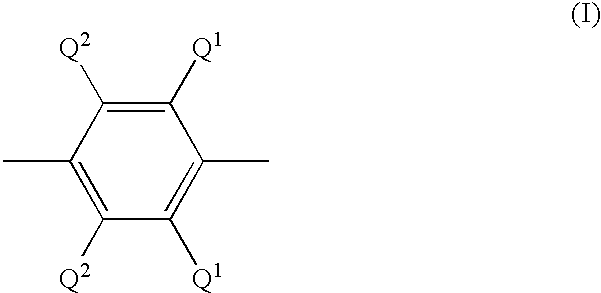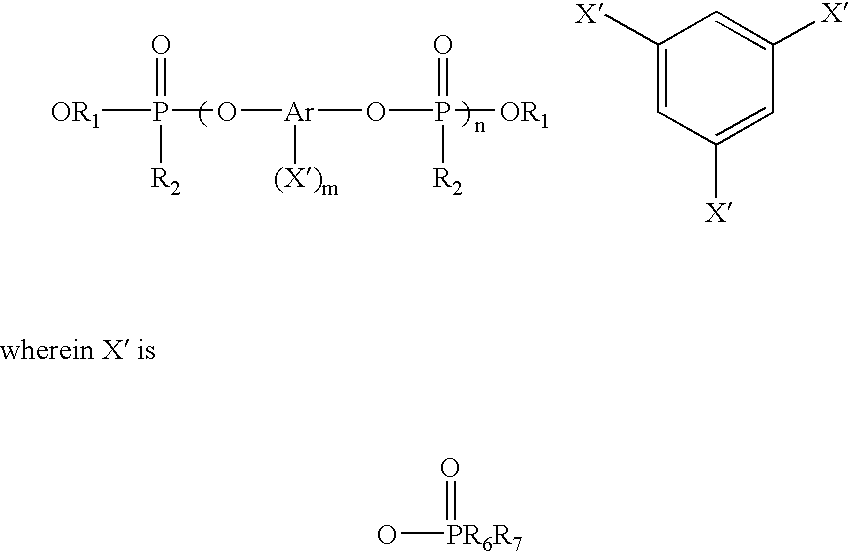High flow polyphenylene ether formulations with dendritic polymers
a technology of dendritic polymers and polyphenylene ether, which is applied in the field of polyphenylene ether resins, can solve the problems that poor melt flow can affect the size and type of parts, and achieve the effect of improving the flow properties of compositions
- Summary
- Abstract
- Description
- Claims
- Application Information
AI Technical Summary
Benefits of technology
Problems solved by technology
Method used
Image
Examples
examples 1-6
and CONTROL Y
Examples 1-6 and Control Y are set forth in Table 2. Control Y contains no flow modifier and Examples 1-6 employ BOLTRON H20 dendritic polymer as a flow modifier.
examples 7-10
Examples 7-10 are set forth in Table 3. Examples 7-10 employ BOLTRON H30 dendritic polymer as a flow modifier.
A comparison of the data in Table 1 to the data in Tables 2 and 3, shows the addition of dendritic polymer to a polyphenylene ether formulation provides significantly higher reductions in Kayeness rheology at similar loadings to the Nirez 2150 / 7042 terpene phenol flow modifier. Amounts of dendritic polymer as low as 2% wt show significant effects in reducing viscosity and increasing flow. Heat distortion temperatures do not vary significantly until much higher loadings (10% wt) were introduced. The data also show that impact properties were reduced, but to acceptable levels, particularly at lower concentrations of the dendritic polymer.
examples 11-22
, COMPARATIVE EXAMPLES G-F and CONTROLS Q and R
The compositions for Examples 11-22, Comparative examples G-L and Controls Q and R are set forth in Table 4. Examples 11-22 employ either BOLTRON H20 or BOLTRON H30 dendritic polymer as a flow modifier. Comparative examples G-L employ Nirez terpene phenol as an impact modifier and Controls Q and R do not contain any flow modifier.
The results in Table 4 show that high flow is still obtained with the use of the flame retardant additive and that flammability is at acceptable levels with the addition of the dendritic polymers, particularly at the lower loadings of dendritic polymers.
PUM
| Property | Measurement | Unit |
|---|---|---|
| temperature | aaaaa | aaaaa |
| glass transition temperature | aaaaa | aaaaa |
| wt % | aaaaa | aaaaa |
Abstract
Description
Claims
Application Information
 Login to View More
Login to View More - R&D
- Intellectual Property
- Life Sciences
- Materials
- Tech Scout
- Unparalleled Data Quality
- Higher Quality Content
- 60% Fewer Hallucinations
Browse by: Latest US Patents, China's latest patents, Technical Efficacy Thesaurus, Application Domain, Technology Topic, Popular Technical Reports.
© 2025 PatSnap. All rights reserved.Legal|Privacy policy|Modern Slavery Act Transparency Statement|Sitemap|About US| Contact US: help@patsnap.com


